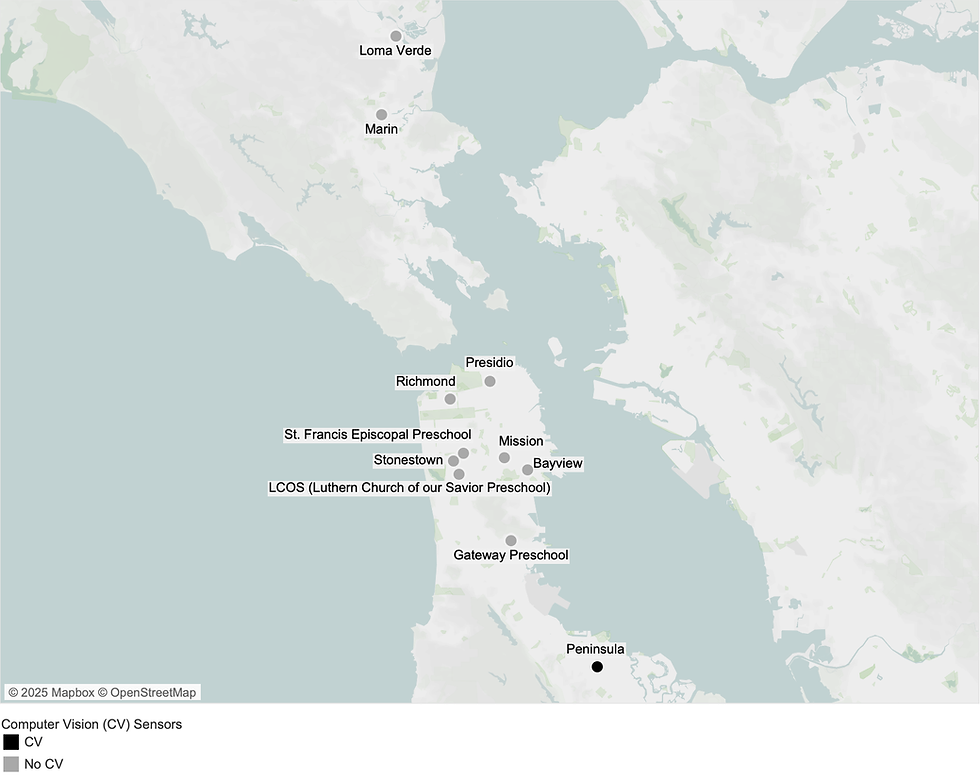The Y: Gotta Know: Healthy Response to Toxic Wildfire
- Cristina Greavu
- Feb 1, 2021
- 2 min read
Updated: Sep 23, 2024

Sample image of the AirAngel dashboard shows the “target” condition in green (healthy for everyone), “boundary” condition in yellow (sensitive populations are more likely to feel discomfort) and “amiss” condition in red (exertion and prolonged exposure will cause significant discomfort). Indoor and outdoor environments are being measured at select locations.
Chief Operating Officer at the Y of San Francisco Jamie Bruning-Miles faced a major challenge during the wildfire season of 2018. Fires raging north of San Francisco were sending smoke and toxic plumes into the Bay Area and spiking AQI levels. Unsure of the air quality at each location, the Y was forced to shut down its facilities.
This went against the spirit and hard-earned reputation of the Y as an accessible center of health for the community, especially at difficult times.
In his search for a solution to this problem, Jamie and the Y found AirAngel.
AirAngel is a commercial grade environmental monitoring system developed by MKThink and technology business partner Roundhouse One to help clients keep their building occupants as safe and healthy as possible. Made of modular integrated sensor components and connected to a powerful data management system, Air Angel collects and displays environmental data on a user-friendly dashboard. The system is designed to let you know when any one of its environmental quality indicators approaches unhealthy levels.
In the fall of 2019, the Y deployed thirty-three sensor networks eleven locations. Each sensor reported air quality indicators every ten minutes each. At some locations indoor and outdoor sensors were deployed to understand the difference between environments. The sensors report on a few key indicators from Air Angel’s suite of capabilities:
AQI – Air Quality Index
PM 2.5 – Particulate matter below 2.5 micrometers in size
PM 10 – Particulate matter below 10 micrometers in size
VOC – Volatile organic compounds
CO2 – Carbon dioxide levels
After just three weeks of observations patterns emerged:
· It became clearer which facilities did a better job than the others of keeping outdoor pollutants from entering the buildings
· Recurring, elevated levels of CO2 built-up were identified at one location
· Recurring, elevated VOC levels were identified in one location
Using these findings, the Y developed operational plans to move activities indoors when air quality levels were unsafe and when to safely maintain activity levels. The Y also used the data to device corrective actions in the case of the CO2 build-up and higher than normal VOC levels.
The Y was able to keep serving its community throughout the 2019 fire season, returning to its role as a safe and healthy place for community at times of crisis.
------
Jamie shared the Y story of the 2018 wildfires during the MKThink hosted panel discussion focusing on Indoor Air Quality and At-Risk Populations, hosted in January 2020 at MKThink. For more on our panelists and their discussion, follow this link.
To read more about AirAngel’s capabilities and how they have expanded to include social distancing monitoring during the Covid 19 outbreak, follow this link.




Comments